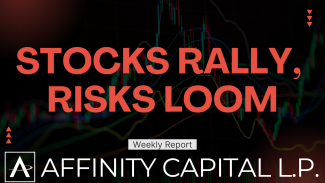
Tariff Turbulence, Labor Weakness & Market Resilience: Weekly Update
The U.S. equity markets were marked by a modest pullback in the Nasdaq, while the Dow and small caps posted gains. Through Tuesday, the Dow Jones surged roughly +1.5%, while the S&P 500 added about +0.4% and the Nasdaq slipped ~‑0.3% for the week. Mega-cap technology stocks led earlier gains, pushing both the S&P and Nasdaq to fresh all-time highs by early July, building on a two‑month rally of nearly +24% from April lows.
Sector performance highlights include communication services (+5%) and technology (+4.3%) outpacing the broader market on increasing investor enthusiasm around trade optimism and cooling commodity prices.
Key Drivers & Economic Developments
- Softening Labor Data: June’s ADP report showed a decline of 33,000 private‑sector jobs, signaling weakness in hiring momentum—the first fall in over two years and well below expectations of +100,000. If the official nonfarm payrolls data show continued softness, the Fed may consider rate cuts as early as July.
- Tariff Deadline Tensions: With the “Liberation Day” tariff pause set to expire July 9, investor anxiety is rising. U.S. mid-size firms face roughly $82B in increased costs due to tariffs, weighing on margins and hiring plans. Renewed tariffs could introduce volatility, while phased trade deals with countries like the UK and China may offer relief if successful.
- Dollar & Bond Markets: The U.S. dollar faced its worst first-half decline since 1973, down over 10%, driven by policy uncertainty and tariff rhetoric. Treasury yields declined as well—10‑year yields hit ~4.28%—suggesting investor caution and easing inflation expectations.
- Federal Reserve Outlook: Fed Chair Jerome Powell cited tariff‑driven inflation as a key reason for delaying interest rate cuts. That said, mounting signs of labor weakness are increasing speculation around a potential rate cut this month or in early fall if conditions deteriorate. The anticipated replacement of Powell later in 2025 adds another layer of policy uncertainty in rate‑sensitive sectors.
Analysis & Implications
- The market rally reflects robust investor sentiment around improved trade relations, lower oil prices, and the momentum in mega-cap stocks. However, tariff risk looms large with the upcoming deadline and narrow trade progress so far.
- Labor market softening raises the likelihood that the Fed will pivot sooner than previously expected, which may buoy market risk assets but also increase inflation uncertainty if stimulus arrives prematurely.
- A weaker dollar offers export benefits but also signals global confidence concerns—this dynamic could fuel inflows into commodities and foreign markets. Expect bond yields to remain sensitive to macro data and Fed commentary.
Outlook and Forecast
Over the next few trading days, attention will center on the nonfarm payroll report for June, scheduled Thursday, and how investors interpret it in terms of Fed timing. July 9 represents a critical date for trade policy clarity as the tariff pause ends. Continued buy‑the‑dip sentiment may sustain upward market momentum, but re‑escalation of trade threats or worse‑than‑expected labor data could trigger volatility.
It’s been a volatile but constructive week, with an uneven mix of optimism around trade developments and caution on economic fundamentals. The near future hinges on labor data and policy moves—both fiscal and regulatory. We continue to monitor closely and recommend balanced positioning with attention to risk catalysts.
As always, we welcome your questions and are here to support you. At the heart of everything we do is our commitment to "Wealth Management for Life"—providing enduring guidance for you and your family’s financial success.

